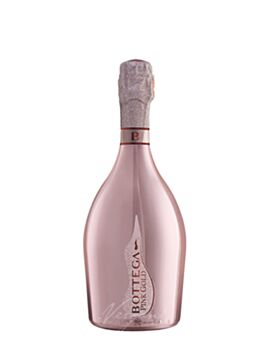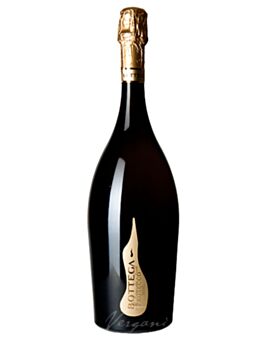
Prosecco
In this ultimate guide, we delve into the fascinating world of Prosecco DOC, exploring its history, the production process, different styles, tasting notes and even tips on storage and serving. So grab a glass and join us on this sparkling journey!
The cultivation of Glera grapes, the most important grape variety for Prosecco production, plays a crucial role in the history of the wine. The unique terroir of the Prosecco region, with its hilly terrain and mild climate influenced by the Adriatic Sea, provides the perfect conditions for growing these grapes. The careful selection and harvesting of the Glera grapes contribute to the unmistakable taste profile of Prosecco DOC, which is characterized by notes of green apple, pear and floral aromas.

What is the difference between Champagne and Prosecco
What distinguishes Prosecco DOC from other sparkling wines is its production method. Unlike champagne, which undergoes a second fermentation in the bottle, Prosecco DOC is produced using the Charmat method. In this method, the second fermentation is carried out in large stainless steel tanks, which preserves the fresh and fruity characteristics of the wine. Prosecco DOC is also known for its lively bubbles. Another factor that contributes to the uniqueness of Prosecco DOC is its versatility. This sparkling wine can be enjoyed as an aperitif as well as with a variety of dishes, from seafood to salads and light pasta dishes. Its crisp acidity and effervescence make it a refreshing choice for warm summer days or festive occasions. Whether you prefer a dry or a slightly sweeter Prosecco, Prosecco DOC offers a diverse selection for every taste.
The grapes used for Prosecco DOC
Prosecco DOC is mainly made from one grape variety: Glera. The Glera grapes contribute to the characteristic fruity and floral aromas for which Prosecco is known. The unique climate and soil of the region also play an important role in shaping the flavor profile of the grapes. Pinot Nero grapes may also be used for Prosecco Rosé DOC.
The Glera grapes, which form the basis of Prosecco production, thrive in the hilly areas of the Veneto and Friuli-Venezia Giulia regions in north-eastern Italy. These grapes are carefully tended by local winegrowers who have refined their winemaking practices over generations. The microclimate of the Prosecco region, with its warm days and cool nights, allows the grapes to ripen slowly and develop complex aromas while retaining a refreshing acidity that is essential for sparkling wine production.
The different styles of Prosecco DOC
Prosecco DOC Brut
Prosecco DOC Brut is known for being the driest of all Proseccos. It is characterized by high acidity, lively fruit aromas and a crisp finish. This type of Prosecco is a popular choice for those who prefer a refreshing and less sweet sparkling wine. It pairs beautifully with a range of dishes such as fresh seafood, light salads and delicate cheeses, enhancing the dining experience with its clean and invigorating taste.
Prosecco DOC Extra Dry
In terms of sweetness, Prosecco DOC Extra Dry lies between the Brut and Dry varieties. It offers a hint of sweetness that is balanced by a zesty acidity, creating a harmonious flavor profile. This Prosecco is versatile and can be paired with a variety of foods, making it a good choice for appetizers, savoury dishes and fruity desserts. The slightly sweet yet refreshing character of Prosecco DOC Extra Dry makes it a crowd favorite at gatherings and celebrations.
Prosecco DOC Dry
Prosecco DOC Dry is slightly sweeter than the Extra Dry version. It has a hint of sweetness that goes well with richer dishes and creamy desserts and adds a delicious element to the overall flavor. Prosecco DOC Dry is a popular choice for brunches. Its versatility in pairing with a range of flavors and its slightly sweet profile make it a top choice for anyone looking for a sparkling wine that is both approachable and charming.
Tasting notes of Prosecco DOC
Prosecco DOC, a popular Italian sparkling wine, offers a wonderful sensory experience with its nuanced aromas and flavors. Sipping a glass of Prosecco DOC, one can perceive a symphony of delicious notes that seduce the palate. The first sip reveals crisp notes of green apple, followed by subtle undertones of ripe pear that add a hint of sweetness. As the effervescent bubbles dance on the tongue, delicate white flowers delight the senses and evoke a sense of elegance and grace. In addition, the Prosecco DOC surprises with a tangy burst of citrus fruits that awaken the taste buds and provide a refreshing and invigorating sensation. Amidst these vibrant aromas, a subtle hint of almond may emerge, adding complexity to the wine's profile. The harmonious interplay of these aromas and flavors, coupled with the wine's refreshing acidity and lively effervescence, results in a truly enchanting drinking experience that lingers on the palate.
Storage and serving of Prosecco DOC
Ideal storage conditions
To preserve the quality and freshness of Prosecco DOC, it is important to store it correctly. The wine should be stored in a cool, dark place, protected from direct sunlight and drastic temperature fluctuations.
Humidity also plays a decisive role in the integrity of the Prosecco DOC. Excessive dryness can cause the cork to shrink, allowing air to enter the bottle and spoil the wine. On the other hand, high humidity can promote mold growth, which can affect the taste of the wine. Therefore, ensure a moderate humidity level of around 70 to 80% in the storage room to keep your Prosecco DOC in optimum condition.
Best serving temperature
Prosecco DOC is best served chilled to emphasize its crispness and lively taste. The ideal serving temperature is between 4°C and 8°C. You can achieve this by placing the bottle in an ice bucket for around 30 minutes before serving. Avoid over-chilling as this can affect the aromas and taste of the wine.








